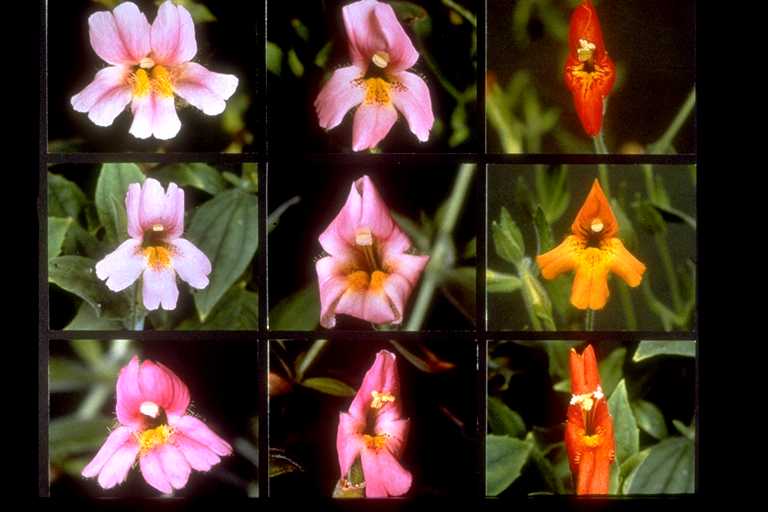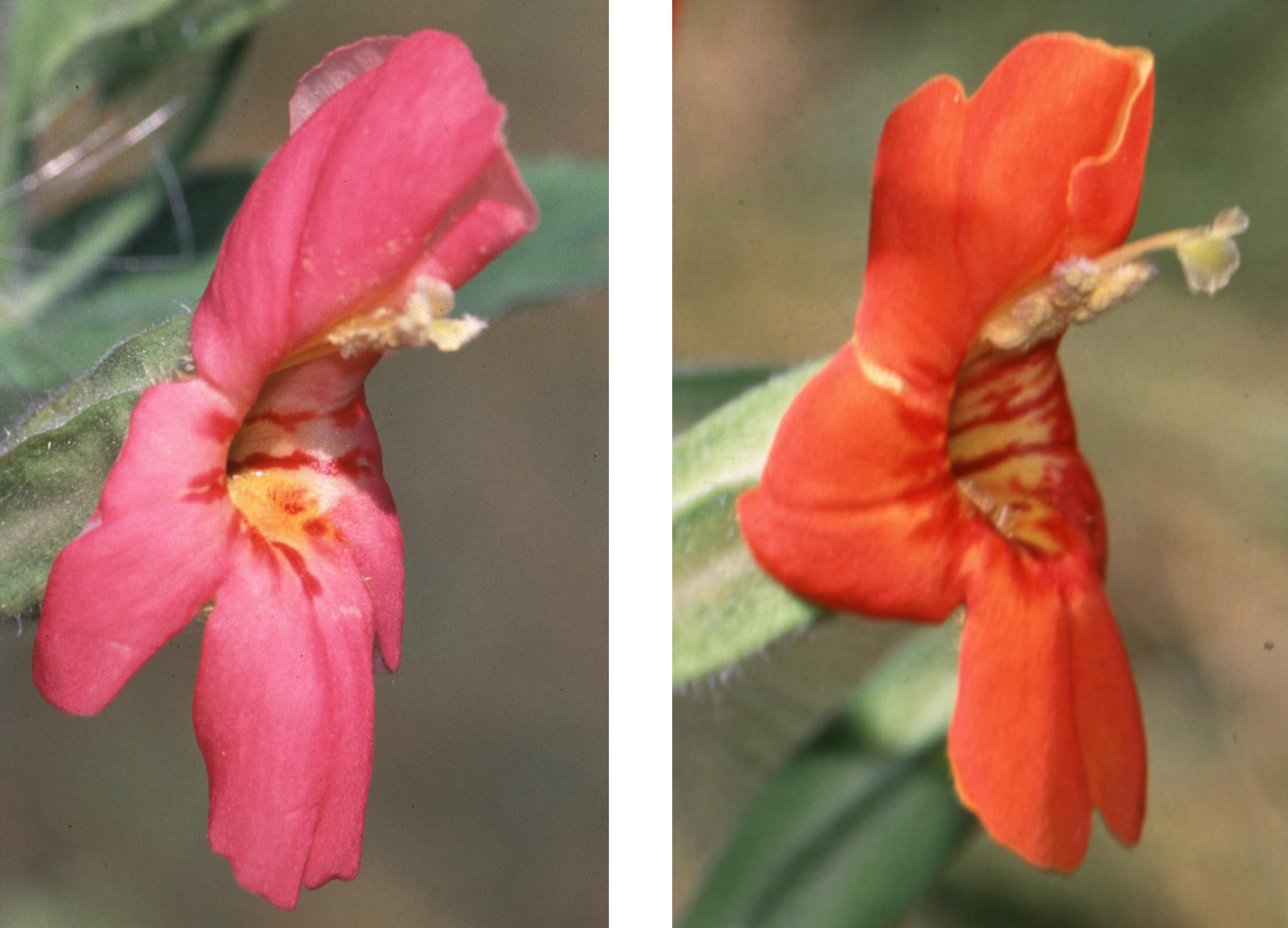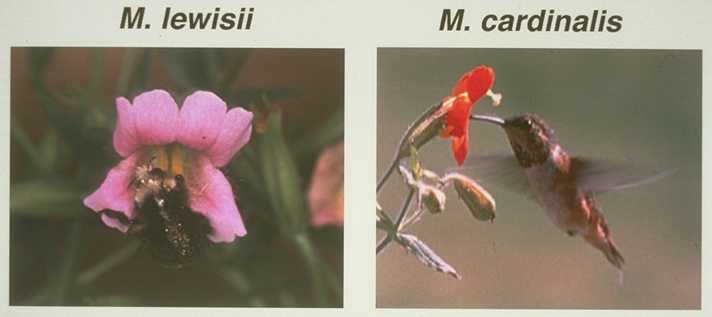 Doug
Schemske and I suggest that the genetics of
reproductive isolation in sympatry can be understood as
the genetics of differences in floral structure, and that
the genetics of floral structure can be determined by
mapping the quantitative trait loci (QTLs) that control
characters such as flower color, corolla shape and size,
nectar volume, and pollinator access to the plant
reproductive organs. We crossed M. lewisii
(upper left) with M. cardinalis (upper right) to
produce an artificial F1 hybrid (upper center). The F1
was self-pollinated to produce F2 offspring segregating
for the floral traits that distinguish the two parental
species (lower 6 photos). We have found that most traits
involved in pollinator attraction, reward, and the
efficiency of pollen transfer are under the control of
QTLs with large phenotypic effects.
Doug
Schemske and I suggest that the genetics of
reproductive isolation in sympatry can be understood as
the genetics of differences in floral structure, and that
the genetics of floral structure can be determined by
mapping the quantitative trait loci (QTLs) that control
characters such as flower color, corolla shape and size,
nectar volume, and pollinator access to the plant
reproductive organs. We crossed M. lewisii
(upper left) with M. cardinalis (upper right) to
produce an artificial F1 hybrid (upper center). The F1
was self-pollinated to produce F2 offspring segregating
for the floral traits that distinguish the two parental
species (lower 6 photos). We have found that most traits
involved in pollinator attraction, reward, and the
efficiency of pollen transfer are under the control of
QTLs with large phenotypic effects.

We have developed near-isogenic lines
(NILs) in which a major QTL interval from M. lewisii
is introgressed into M. cardinalis, and vice
versa, by marker-assisted backcrossing. NILs allow a much better determination of QTL effect in a
homogeneous genetic background.
 Once a defined chromosome
segment has been introgressed, it can be broken up by
further recombination to resolve the genetic structure of
each QTL. NILs have been made for two traits under
major QTL control: carotenoid pigmentation and nectar
volume, which we believe are important for pollinator
discrimination and visitation.
Once a defined chromosome
segment has been introgressed, it can be broken up by
further recombination to resolve the genetic structure of
each QTL. NILs have been made for two traits under
major QTL control: carotenoid pigmentation and nectar
volume, which we believe are important for pollinator
discrimination and visitation.
